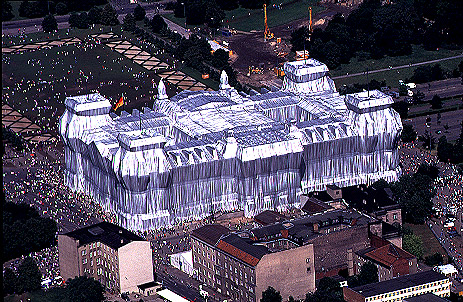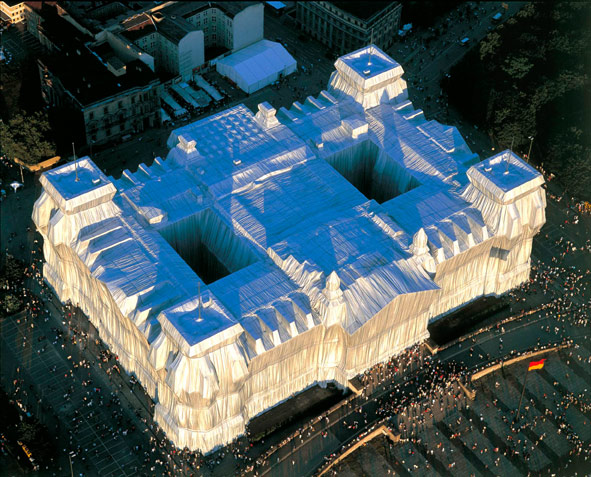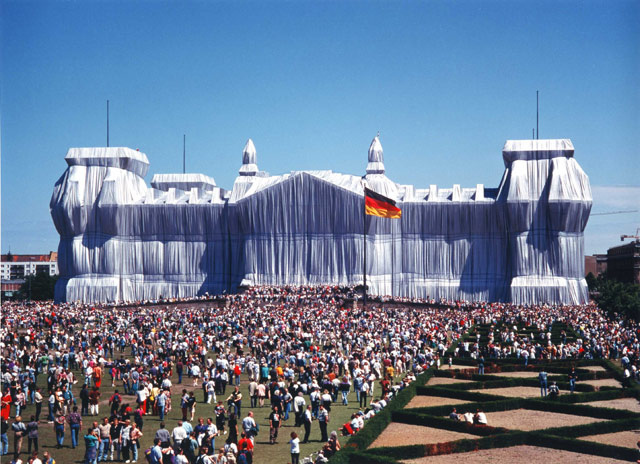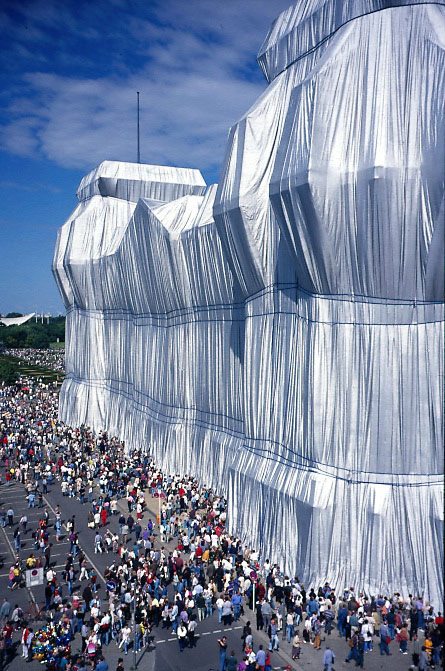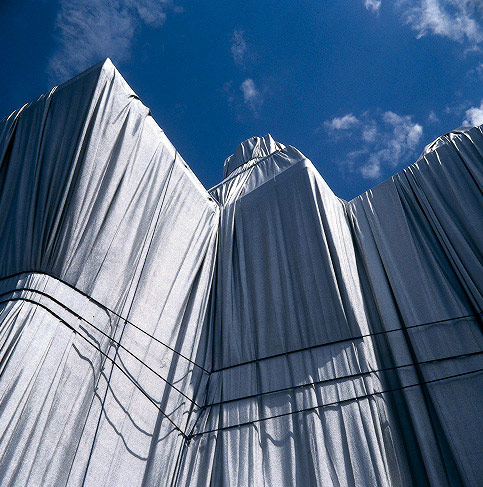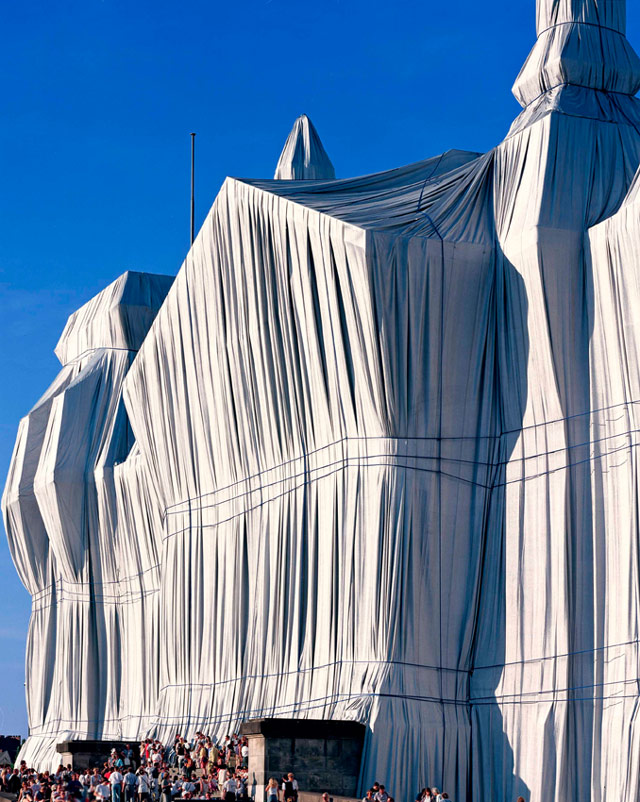
PICTURES
Please Click On The Thumbnails To Enlarge The Pictures
The Wrapped Reichstag in Berlin exemplified environmental art/earthwork because it was constructed in a pre-existing environment. They did not have to create an environment. They instead altered the urban setting and the Reichstag itself.
By wrapping the Reichstag in fabric, Christo and Jeanne-Claude drew the viewers attention to the basic structure or essence of the building, which in most cases can be lost when viewed with a structures dominating details. Doing this makes the viewer more aware of their surroundings and even themselves. "The wrapping or surrounding of familiar objects, the curtainging off of familiar views, the interventions of fabric where one least expects it undermines our comfortable residence with the accustomed and creates a sense of dislocation." (Christo and Jeanne-Claude)
For Christo the Reichstag building had great importance due to the fact that it was where the U.S. and the Soviets had their biggest confrontation, during the Cold War. It also represents the communism that he escaped from in 1961.
The Wrapped Reichstag brought up many political and historical issues that relate directly to the Cold War and the many previous attempts to represent a unified German people. With the many changes in Germany, the Wrapped Reichstag serves as an opportunity for many questions to be posed bt the German people, the European Community and the entire world.
Wrapping the Reichstag in fabric opened people's eyes to something new. Like many of Christo and Jeanne-Claude's other ephemeral works it represents a sort of natural quality. The Wrapped Reichstag like all things in nature, did not last. It had a life not unlike that of an insect, which made some spectators aware of life's precious brevity.
Amongst other environmental artists, Christo and Jeanne-Claude stand out because of they use materials and supplies that aren't normally found in certain environments and put them together on a grand scale. A bridge wrapped in fabric isn't something you'd see everyday. It's out of the ordinary and makes you re-examine your perspective on a certain setting be it rural or urban. Other environmental artists mostly built structures made up of materials that are found in almost every environment, like soils and stones. They don't take those materials and place them some place where they don't belong.
To make Christo and Jeanne-Claude's vision of the Wrapped Reichstag come to life the artist had to work with certain people that most artist never need to collaborate with. For this particular project the artists worked with engineers, architects, lawyers, and members of the German Parliment. With the help of all of these people the world had a chance to view this monumental moment in history.
